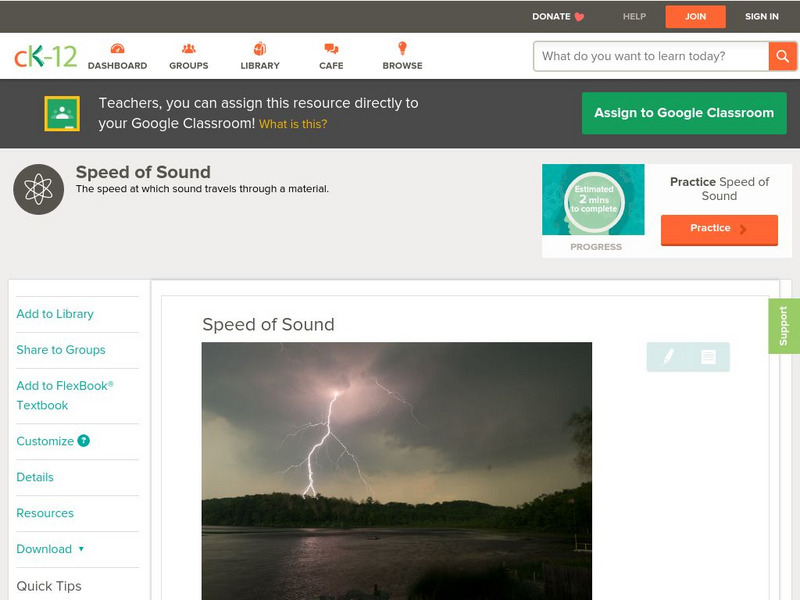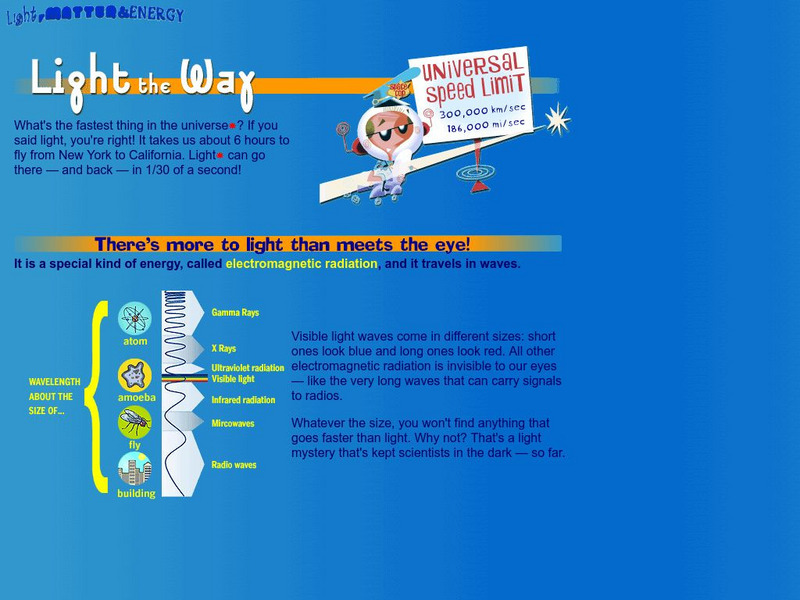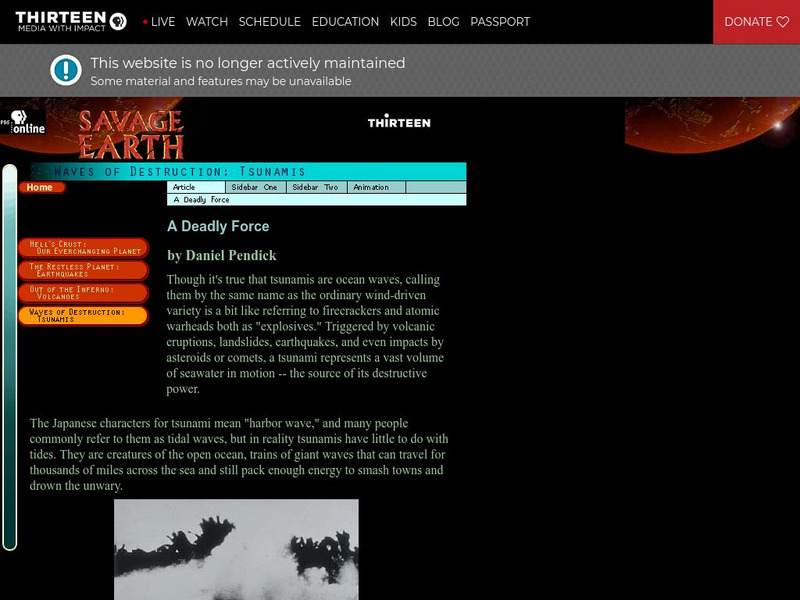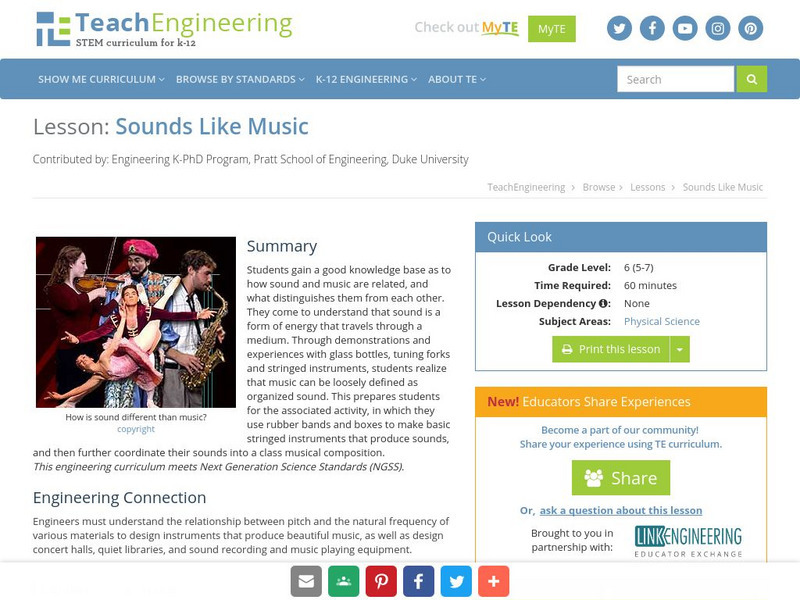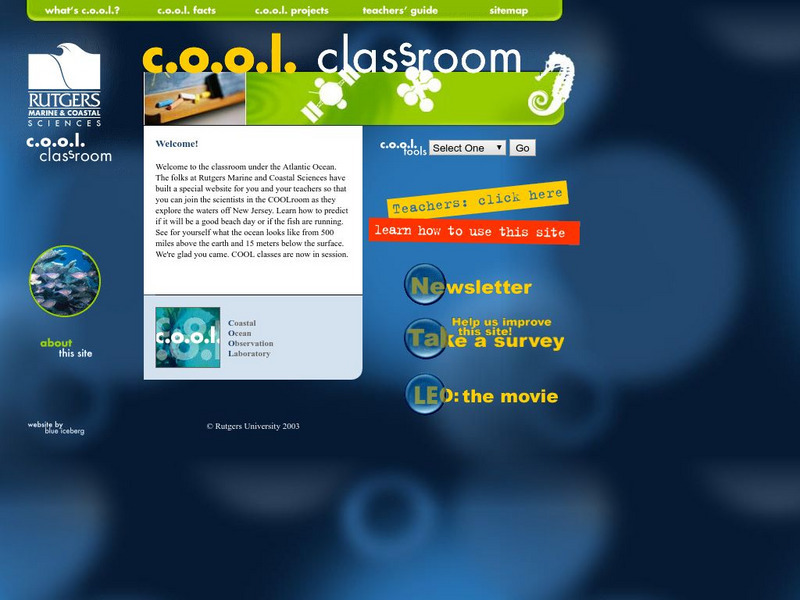CK-12 Foundation
Ck 12: Physical Science: Speed of Sound
[Free Registration/Login may be required to access all resource tools.] What the speed of sound is and its variation in different media, and the effect of temperature on the speed of sound.
Khan Academy
Khan Academy: Diffraction and Constructive and Destructive Interference
Article goes into detail about what exactly is interference.
Other
Abc News: Talking to Kids About the Tsunami Tragedy
How can you begin to talk to your kids about the Tsunami tragedy? This site offers insight on how to deal with this difficult topic.
Other
K 3 Learning Pages: Tsunami Disaster
This site features several links to tsunami relief sites. Students and teachers can access information about the tsunami relief efforts through these resources.
Curated OER
Yahoo! Health: What Is a Heart Attack?
This site from Yahoo! Health discusses a heart attack. Learn what you can do to prevent having a heart attack and check out images showing the parts of the heart, the build up of plaque in arteries, and ECG waves after a heart attack.
Optical Society
Optical Society of America: Optics for Kids: Interference in a Ripple Tank
An investigation, using a ripple tank, into how waves behave when they collide with each other. With an explanation of what is observed, and a link to an article on refraction.
Optical Society
Optical Society of America: Optics for Kids: Shimmering Lenses
An experiment using Jell-O to create lenses, to see how light behaves with flat, concave, and convex lens surfaces. With an explanation of what is observed, and a link to an informative article on lenses.
TeachEngineering
Teach Engineering: Beating the Motion Sensor
Lighting is responsible for nearly one-third of the electricity use in buildings. One of the best ways to conserve energy is to make sure the lights are turned off when no one is in a room. This process can be automated using motion...
American Museum of Natural History
American Museum of Natural History: O Logy: Light, Matter, Energy: Light the Way
What is electromagnetic radiation and how does it work? Review a captioned graphic that explains electromagnetic radiation and the visible and invisible types of radiation on the electromagnetic spectrum.
TeachEngineering
Teach Engineering: Sound and Light
The Sound and Light unit provides students with an understanding of sound and light waves through the theme of the "Sunken Treasure," a continuous story line throughout the lessons. In Lessons 1-5, students learn about sound, and in...
PBS
Wnet: Thirteen: Savage Earth: Tsunamis
Excellent site exploring the mysterious and destructive tsunamis. Explore this scientific marvel and learn about the causes and dangers.
TeachEngineering
Teach Engineering: Sounds Like Music
Music can loosely be defined as organized sound. The lesson objectives, understanding sound is a form of energy, understanding pitch, understanding sound traveling through a medium, and being able to separate music from sound, can...
California Institute of Technology
Spitzer Science Center: Que Es El Infrarrojo?
An excellent resource for Spanish speaking science students. Provides a thorough description of infrared light, what it does and how it is used. Provides excellent pictures depicting actual use.
OpenSciEd
Open Sci Ed: Visualizing Sound in a Medium
This simulation is a slow motion version of what you might actually see if you could see particles in a medium vibrating.
NASA
Viewing the Violent Universe: What Are Gamma Rays?
The universe produces a broad range of light, only a fraction of which is visible to our eyes. Gamma rays are nonvisible light, which also includes x-rays, ultraviolet light, infrared radiation, and radio waves.
Discovery Education
Discovery Education: Dynamic Earth, Tsunami
Use this site to teach your learners what a tidal wave or tsunami is from this lesson plan. The discovery activity shows how a tsunami happens.
Other
Rutgers Marine & Coastal Sciences: Cool Classroom
Students and teachers can explore the work of marine scientists and observe the ocean from their computers. Learn about Rutgers Coastal Ocean Observation Laboratory, discover why oceanography is important, and see what life is like in...
Physics Classroom
The Physics Classroom: Sound Properties and Their Perception
The concept of pitch and frequency is covered in this tutorial. Learn what frequency and pitch are, the difference between infra sound and ultrasonic frequencies, and how pitch is related to the frequency of a sound.
OpenSciEd
Open Sci Ed: Hitting the High Notes: Pitch
A simulation that shows what happens to a sound wave when the pitch is changed.
OpenSciEd
Open Sci Ed: Turn It Up!: Loudness
A simulation that shows what happens to a sound wave when the pitch is changed.
Physics Classroom
The Physics Classroom: Two Point Source Interference
This lesson from the Glenbrook South High School discusses two-point source interference. It gives detail on the difference between constructive and destructive interference, what a two-point source interference is and what happens when...
Libre Text
Libre Texts: Physics: Electron in a Box
What happens when an electron is trapped in a one-dimensional box? Take a look at these theories and equations applied to examples which can be illustrated this way.
Science Struck
Science Struck: A Complete List of Natural Disasters
Explains what a natural disaster is and provides a list of every type along with a short description of each.
